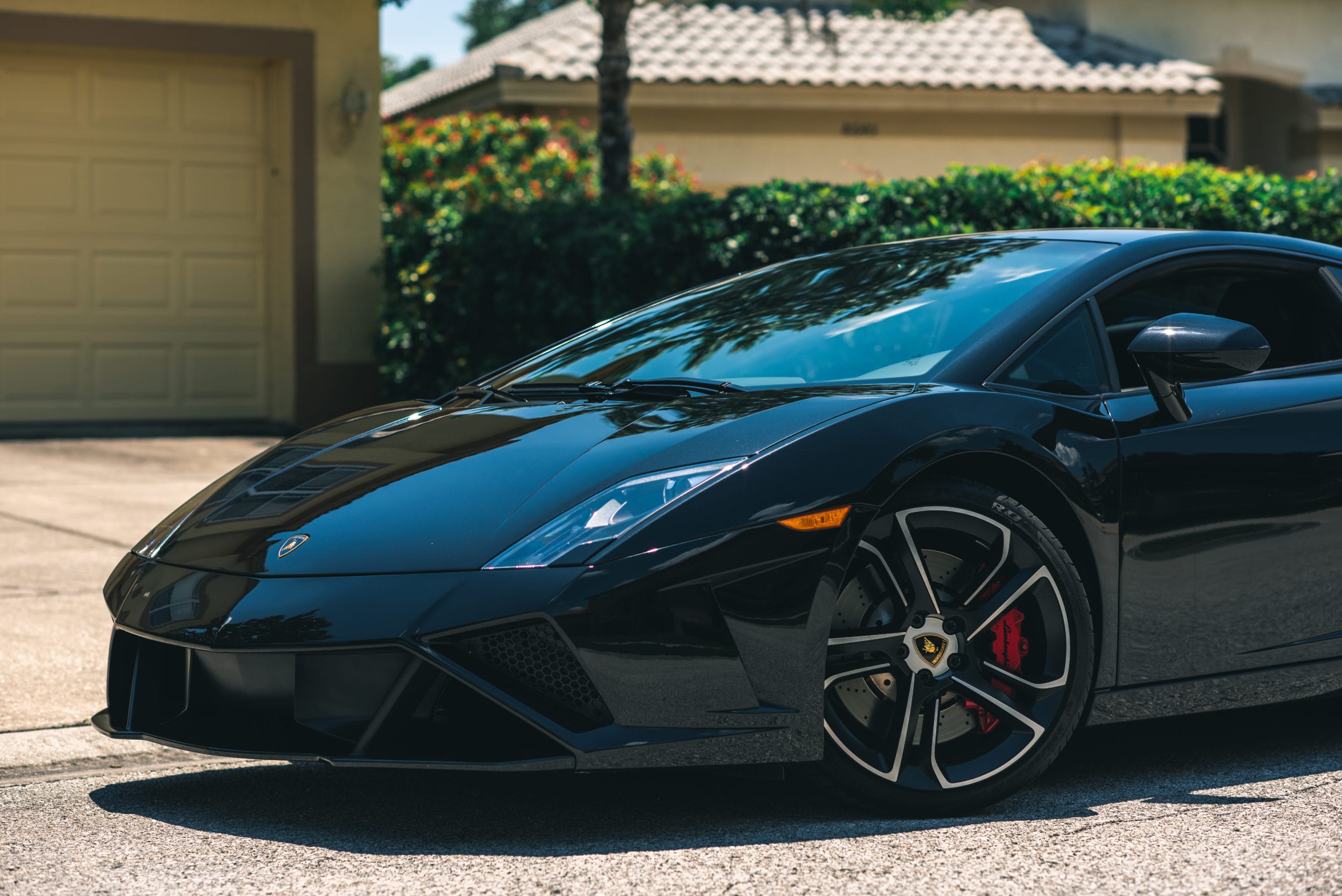For supercar owners, it’s all about speed. The thrill as an exotic car blasts from 0 to 60 mph in less than 3 seconds is unmatched, and once you’ve got it, you’ll never let it go.
For many supercar owners, speed starts and ends with Lamborghinis, and for good reason. The automotive manufacturer has been breaking speed records since its early days.
Automobili Lamborghini’s Legacy of Speed Records
Since its foundation in 1963, Lamborghini has been breaking records. The first Lamborghini models, introduced in the mid 1960s, established a mid-engine layout as the standard for exotic vehicles. The Lamborghini Miura won the 24 Hours of Daytona with its top speed of 170 mph in 1968, just 5 years after the company’s founding.
Throughout the remainder of the 20th century, Lamborghini continued to turn heads with its high speed vehicles. The company participated in Formula One races in the late 1980s and 1990s, and the Lamborghini-powered Lotus placed on the podium at the 1990 Japanese Grand Prix.
Released in 1999, the Lamborghini Diablo GT claimed the record of the fastest car in the world with a top speed of 215 miles per hour. Today’s Lamborghini supercars are only getting faster. With each new halo model, from the Countach to Aventador to Veneno, Lamborghini draws on racing and engineering breakthroughs to set fresh new benchmarks. The brand’s unbroken commitment to pushing road-car velocity has culminated in the Lamborghini Aventador’s current 221 mph record.
Key Factors That Determine Lamborghini Top Speed
Lamborghini’s top speeds are nothing short of engineering marvels. To achieve these records, each car’s raw power, driven by engine displacement, horsepower, and torque, has to overcome aerodynamic drag from speeds over 150 mph.
Lamborghini’s advanced engineering tactics include:
- High horsepower engines: Lamborghini’s top cars use V10 and V12 engines to generate the necessary horsepower.
- Aerodynamic design: A focus on extremely aerodynamic design, including strategically placed spoilers and vents, minimizes drag. Underbody diffusers, vortex generators, and rear undertrays also keep the car planted at triple digit speeds.
- Lightweight materials: To reduce weight as much as possible, Lamborghini uses materials including carbon fiber and aluminum alloys. Every kilogram saved yields measurable gains in acceleration, braking, and handling.
- High-performing tires: Lamborghinis’ tires are made of soft materials that easily transfer power to the road for maximum acceleration.
- Hybrid engines: Lamborghini’s electric motors employ hybrid charging strategies under braking and extra electric torque for smooth power delivery.
Top Lamborghini Production Models by Claimed Top Speed
Lamborghini’s fastest cars claim top speeds above 217 mph, with three models reaching 221 mph. Read on to learn which are the fastest Lamborghinis and how they stack up.
Lamborghini Aventador SVJ Coupe – Aerodynamics & 217+ mph Figures
The Lamborghini Aventador SVJ Coupe features a range of different aerodynamic upgrades, including a larger front splitter, optimized side skirts, an active rear wing, and Lamborghini’s Aero Vectoring system. It also boasts a track-focused suspension, carbon-ceramic brakes, and sharper steering calibration for high-speed precision.
- Horsepower: 770 horsepower generated by a 6.5 L V12 NA engine
- Top speed: Just over 217 mph
- 0-60 sprint: 2.8 to 2.9 seconds
Lamborghini Aventador LP 780-4 Ultimae – Ultimate Naturally Aspirated Speed
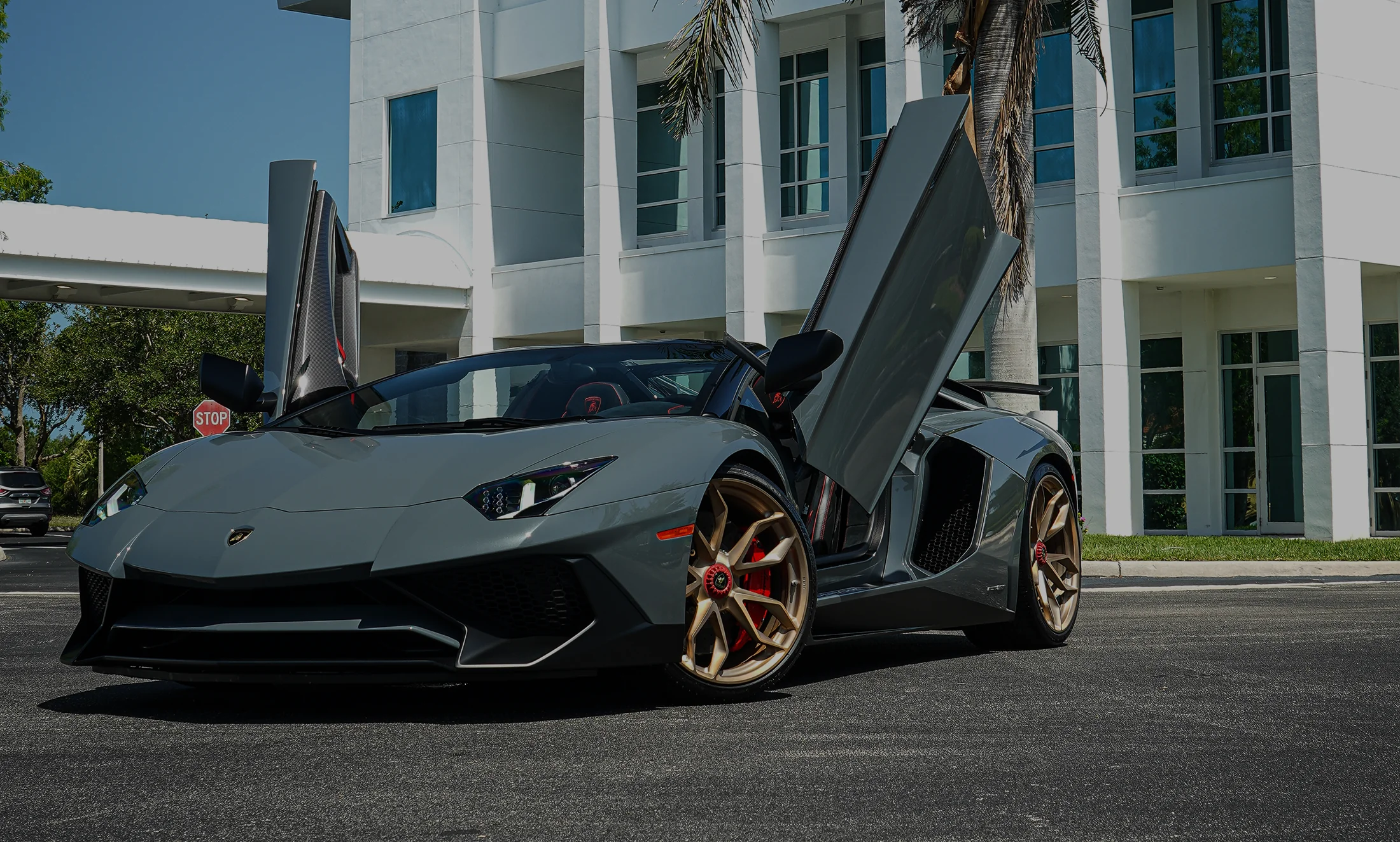 The Lamborghini Aventador LP 780-4 Ultimae is Lamborghini’s final chapter in V12 NA performance. Its design nods to earlier generations, but it features lightweight components and optimized cooling to help it achieve its title as one of the fastest Lamborghinis. The Aventador LP 780-4 Ultimae had an extremely limited production, reinforcing its record-holder prestige.
The Lamborghini Aventador LP 780-4 Ultimae is Lamborghini’s final chapter in V12 NA performance. Its design nods to earlier generations, but it features lightweight components and optimized cooling to help it achieve its title as one of the fastest Lamborghinis. The Aventador LP 780-4 Ultimae had an extremely limited production, reinforcing its record-holder prestige.
- Horsepower: 769 horsepower generated by a 6.5 L engine
- Top speed: Verified at 221 mph
- 0-60 sprint: 2.8 seconds
Lamborghini Sian FKP 37 – Hybrid Powertrain & Supercapacitor Performance
The Lamborghini Sian FKP 37’s is one of the fastest Lamborghinis thanks to its 48-volt supercapacitor. It stores and releases energy instantly, boosting acceleration and throttle response. The Sian FKP 37 is Lamborghini’s first hybrid and had an extremely limited 63-car run.
- Horsepower: 819 horsepower generated by a 6.5 L V12 engine with a 48-volt supercapacitor
- Top speed: 217 mph
- 0-60 sprint: 2.7 to 2.9 seconds
Lamborghini Countach LPI 800-4 – Iconic Record-Setting Run
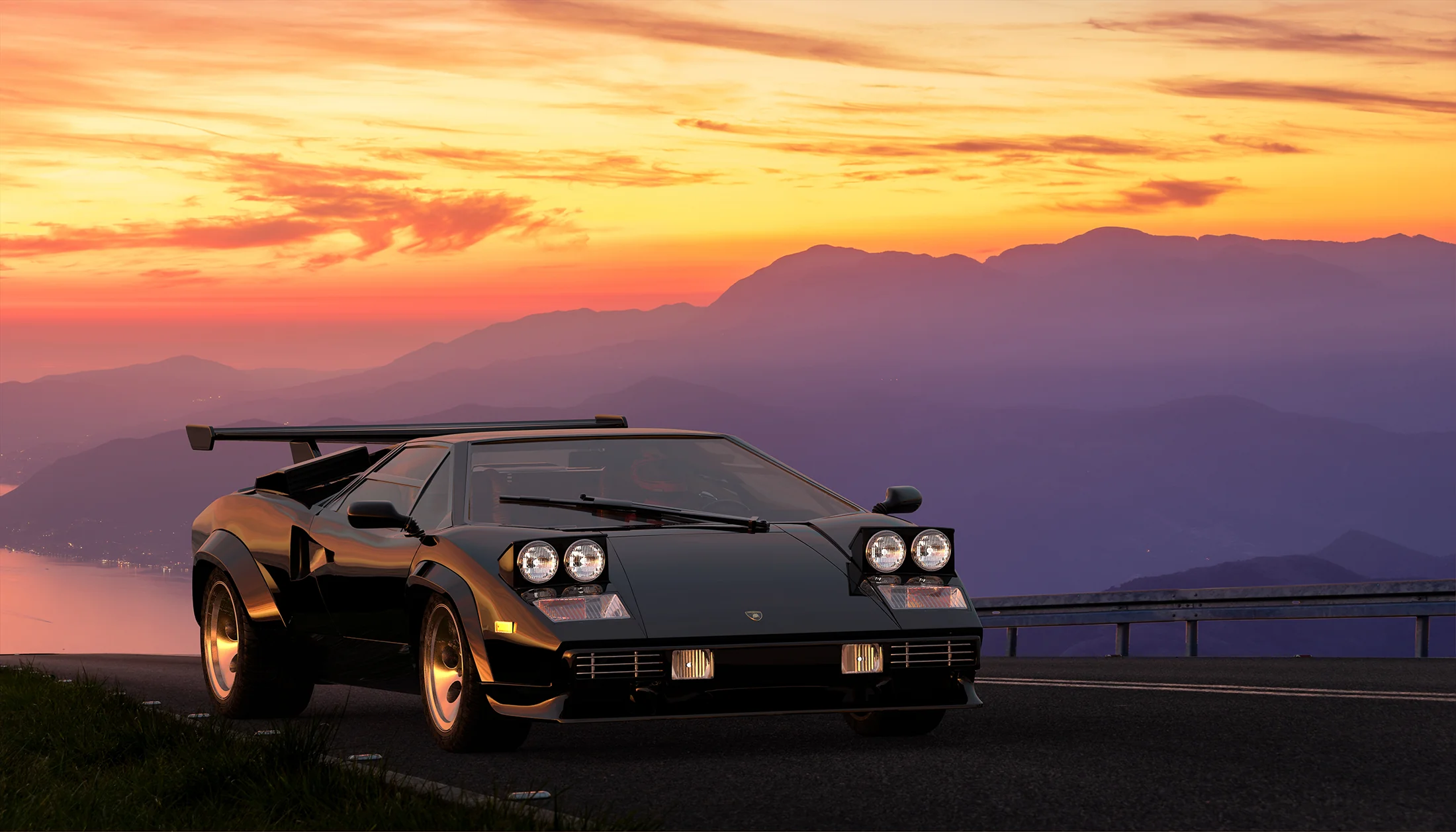 The Lamborghini Countach LPI 800-4 nods to the original Countach’s legend with signature scissor doors and angular styling. This car is notable for its hybrid plus electric motor and seamless torque fill. Again, it had an extremely limited run of only 112 units.
The Lamborghini Countach LPI 800-4 nods to the original Countach’s legend with signature scissor doors and angular styling. This car is notable for its hybrid plus electric motor and seamless torque fill. Again, it had an extremely limited run of only 112 units.
- Horsepower: 803 horsepower generated by ahybrid V12 plus electric motor
- Top speed: 221 mph
- 0-60 sprint: 2.8 seconds
Lamborghini Huracán STO – Nürburgring Lap Time & 0–60 mph Burst
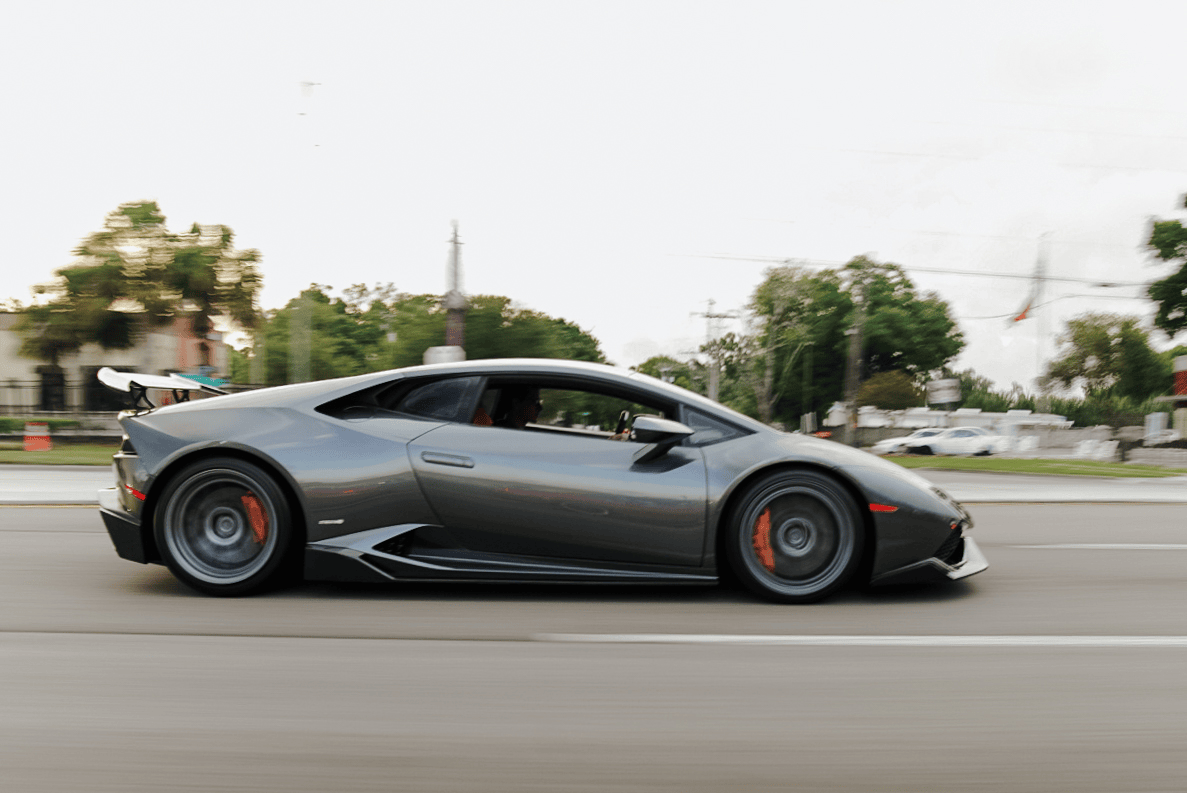 The Lamborghini Huracán STO, another fastest Lamborghini, features race-derived aerodynamics, including GT3-style wing, dive planes and underbody diffusers. Its Nürburgring lap time of approximately 7 minutes to 7 minutes 8 seconds showcased its cornering prowess. Features like rear-wheel steering, active suspension and weight-saving measures elevate its track focus.
The Lamborghini Huracán STO, another fastest Lamborghini, features race-derived aerodynamics, including GT3-style wing, dive planes and underbody diffusers. Its Nürburgring lap time of approximately 7 minutes to 7 minutes 8 seconds showcased its cornering prowess. Features like rear-wheel steering, active suspension and weight-saving measures elevate its track focus.
- Horsepower: 640 horsepower generated by a 5.2 L V10 engine
- Top speed: 193 mph
- 0-60 sprint: 3.0 seconds
Lamborghini Veneno Roadster – Limited-Edition Velocity Milestones
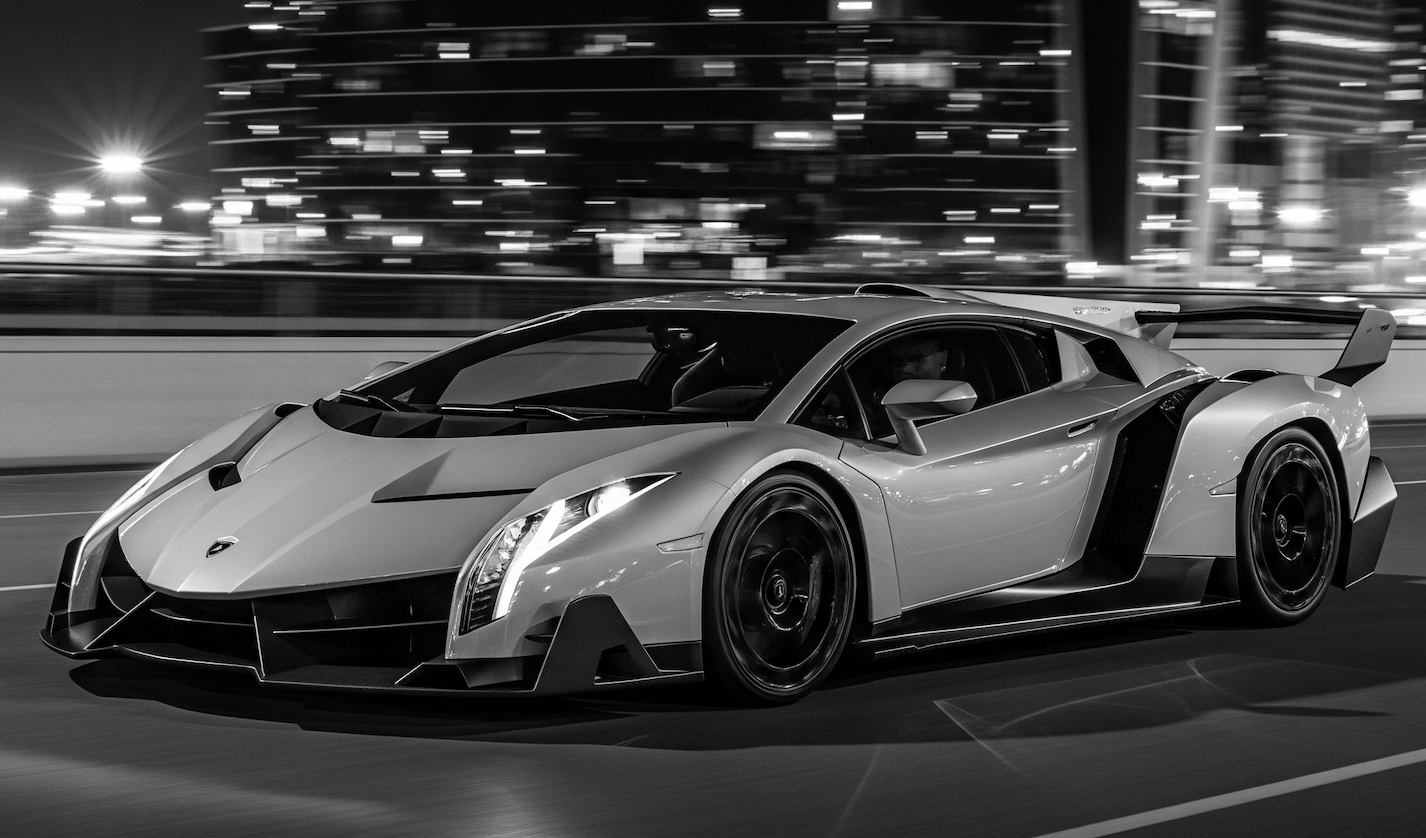 The Veneno Roadster debuted as a 50th-anniversary tribute, with just nine units built. Its extreme carbon-fiber construction, aerodynamic fin work and staggering price tag contributed to its prestige, as did its rarity and radical design. Together, these factors help cement its place among Lamborghini’s fastest halo cars.
The Veneno Roadster debuted as a 50th-anniversary tribute, with just nine units built. Its extreme carbon-fiber construction, aerodynamic fin work and staggering price tag contributed to its prestige, as did its rarity and radical design. Together, these factors help cement its place among Lamborghini’s fastest halo cars.
- Horsepower: 740 horsepower generated by a 6.5 L V12 NA engine
- Top speed: 221 mph
- 0-60 sprint: 2.8 to 2.9 seconds
Why Factory Top Speeds Often Differ from Real-World Results
Discrepancies are common when verifying factory top speeds on the world’s fastest cars. Typically, this is due to factors like altitude, temperature, wind direction, and road gradient, which can add or subtract several miles per hour from factory tests. Tire compound, fuel load, and even driver skill can also influence peak-speed runs. To get the full picture of the fastest Lamborghini’s speeds, it’s important to look at manufacturer claims, in-house data, and third-party verification.
Speed-Testing Myths vs. Reality: Common Misconceptions
There are a number of misconceptions floating around about speed-testing the fastest Lamborghinis and other models. These include:
- Top speed records are only possible because of slipstreaming: Verified top speed records can only be measured when a vehicle is driving on its own, without another car on the road.
- Only modified “show” cars set genuine factory records: Modified cars are not eligible for top speed tests.
- GPS calibration errors and elevation changes don’t matter in speed tests: GPS’s need to be properly calibrated for speed tests. Changes in elevation have impacts on air density and engine performance, influencing results.
- Test models have hidden “race” modes that unlock more speed: Any high-performance modes available in cars tested for top speeds are available to consumers as well.
Frequently Asked Questions
Which Lamborghini Holds the Official Top Speed Record?
Three supercars tie for the fastest Lamborghini in the world: the Lamborghini Aventador Ultimae, Veneno, and Countach LPI 800-4, with top speeds of 221 mph.
Are Hybrid Supercars Faster Than Traditional Naturally Aspirated Models?
Many hybrid supercars have reached higher speeds than naturally aspirated models. They offer instantaneous torque, advanced power output, and better efficiency than their predecessors, resulting in greater horsepower and higher top speeds.
How Are Lamborghini Top Speeds Officially Measured?
During factory testing, Lamborghini top speeds are measured at automotive proving grounds. Testers use GPS devices to precisely measure speeds. Cars are measured in both directions on the test track to compensate for potential variables like wind or track imperfections.
Can Road or Weather Conditions Affect Peak Velocity?
Yes, road and weather conditions can both have dramatic impacts on peak velocity. Rain, snow, and ice can reduce tire traction and limit speed. Weather conditions like strong winds can also create more resistance, preventing cars from reaching top speeds.
Conclusion: Revealing Lamborghini’s Fastest Production Model
221 mph is the current record for the fastest Lamborghini model, shared by the Aventador LP 780-4 Ultimae, Veneno and Countach LPI 800-4. While incoming hybrids like the Revuelto push power numbers beyond 1,000 horsepower, but their speeds still hover just below the 221 mph ceiling.
Looking to Lamborghini’s future, experts suggest we’ll see more electrification, active aerodynamics, and lightweight breakthroughs that could shatter today’s records. With each new model, Lamborghini purses their enduring goal: crafting road-legal supercars that thrill at every speed, right up to the limit.

 WHY US
WHY US
 SELL YOUR CAR
SELL YOUR CAR
 TESTIMONIALS
TESTIMONIALS
 FAQ
FAQ
 CONTACT US
CONTACT US




